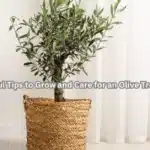Houseplants can easily transform any space into a lush, green oasis. However, not all plants are as innocent as they appear. Some of the most popular houseplants harbor toxins that can harm pets, children, and even adults. Their beauty is undeniable, but the risks they carry call for careful attention.
Being a houseplant lover or a lover of vertical gardening, understanding toxic house plants and how to control them is very important. Let’s look at ten dangerous houseplants, why they are dangerous, and good alternatives that can make your home beautiful without compromising its safety.

10 Deadly Toxic House Plants to Avoid: Keep Your Loved Ones Safe
1. Peace Lily (Spathiphyllum)
The beautiful Peace Lily has its dark green leaves and white blooms, but it contains crystals of calcium oxalate. When ingested, the crystals can cause extreme irritation of the mouth and digestive system, leading to drooling, vomiting, or other difficulty in swallowing by your pets and small children.
Safer Alternative: The Parlor Palm is not toxic and just as stunning.
2. Philodendron
Known for their easy-care nature, Philodendrons are a staple in many homes. However, they’re toxic to pets and humans. Chewing on Philodendron leaves can cause swelling, oral irritation, and difficulty breathing.
Tip: If you love trailing plants, opt for the Spider Plant, a non-toxic and visually appealing alternative.
3. Dieffenbachia (Dumb Cane)
Dieffenbachia gets its common name, Dumb Cane, from the toxic sap it contains, which can cause temporary speechlessness if ingested. Symptoms include swelling of the tongue, drooling, and throat irritation.
Pro Tip: Keep these out of reach in vertical gardens or replace them with a safer option like Areca Palm.
4. Pothos (Devil’s Ivy)
Pothos is one of the most favorite houseplants for beginners but a toxic houseplant as well. Its sap contains calcium oxalates that may lead to oral irritation, vomiting, and even renal failure in extreme cases in pets.
Safer Alternative: Boston Fern, this lush plant is perfect for hanging baskets and pet-friendly.
5. Oleander
Oleander might not be as common indoors, but its deadly reputation deserves a mention. Even a small ingestion of its leaves or flowers can cause severe heart and digestive issues in humans and animals.
Practical Advice: Skip Oleander altogether for houseplant options and instead choose Lavender, which offers calming indoor benefits.
6. Sago Palm
It may be an exotic beauty, but the Sago Palm is also highly toxic. The cycasin in all parts of the plant can cause liver failure in pets and cause significant discomfort in humans.
Pro Tip: Substitute it with a Majesty Palm that’s safer and looks tropical.
7. ZZ Plant (Zamioculcas zamiifolia)
The ZZ Plant is valued for its hardiness but is toxic if ingested. Its sap can cause stomach upset and skin irritation, making it unsuitable for homes with curious kids or pets.
Safer Swap: Go for a Calathea, which is safe and equally stunning with its vibrant patterns.
8. Aloe Vera
While Aloe Vera is well known for its healing properties, it is toxic to cats and dogs. If ingested, it can cause lethargy, vomiting, and diarrhea.
Safe Alternative: A Succulent like Haworthia offers a similar aesthetic without the risks.
9. Jade Plant (Crassula ovata)
This popular succulent is toxic to pets, causing nausea, vomiting, and depression when ingested.
Pro Tip: Replace it with Echeveria, a non-toxic succulent that’s equally low-maintenance.
10. English Ivy (Hedera helix)
English Ivy has gorgeous cascading vines but contains saponins, which can cause vomiting, abdominal pain, and breathing difficulties in pets and children.
Safer Alternative: Instead, use the beautiful Baby’s Tears plant to create lush vertical gardens without the risks.
Practical Tips to Avoid Toxic House Plant Hazards
Always research before you buy: check if a plant is safe for your household.
Strategic Placement: When you must have the toxin, place it in unreachable zones of your pets and your children, such as up on shelves or hung baskets.
Use Labels: Display the names of your poisonous plants as a reminder for other guests and members.
Instruct Your Family: The entire family needs to understand the dangers.
Personal Incident: A Near Tragedy with Toxic Plants
A friend once brought me a gorgeous Peace Lily as a housewarming gift. I placed it on the coffee table, unaware of its toxicity. Within hours, my curious cat began pawing at the leaves. Thankfully, I noticed before she ingested any part of the plant. This incident inspired me to research houseplants thoroughly and prioritize safety over aesthetics.
Final Thoughts
Toxic house plants can be beautiful but come with risks. Identify and avoid these plants—or handle them responsibly—to create a safe and beautiful indoor space.
For pet-friendly plant ideas or tips on safe vertical gardening, explore more on Indoor Plant Genius!
You can also read our other website articles regarding blogging.
Indoor Plants Related
Fragrances & Beauty Related
Fashion Related
Phone Related
Home Decoration
Islamic
Food & Beverage
Health
Sports










